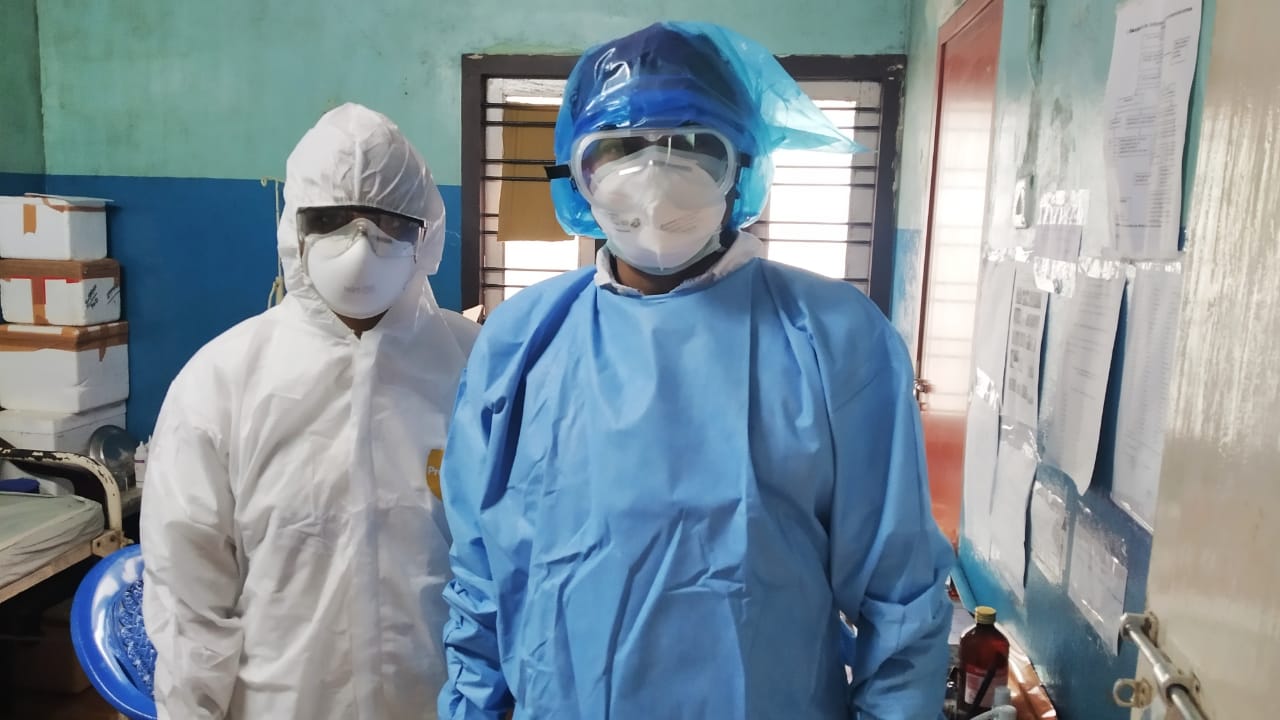
Amidst its ongoing fight against COVID-19, a considerable drop in cases in India has been observed over the past few months. However, while there is some cautious optimism, the emergence of new variants is cause for concern.
India’s fight against COVID-19: Why are cases dropping?
Each day, at the peak of its outbreak, the country reported almost 100,000 infections with severe acute respiratory syndrome coronavirus 2 (SARS-CoV-2) – the novel coronavirus which causes COVID-19. Since September, however, the daily number of new infections has fallen to approximately 11,000. Today, reports state that eighteen states and union territories did not record a single death in the preceding 24 hours.
Declining case numbers are manifest in the country’s health system, where the burden has eased. In Delhi, for example, critical care unit beds equipped with ventilators recorded occupancy figures of almost ninety percent in November. Occupancy rates have since dropped to sixteen percent at the time of writing.
At the time of writing, the world has confirmed more than 110 million cases of COVID-19. In India, confirmed cases thus far number at more than 10.9 million but recoveries far outweigh active cases. According to official data, active cases account for just 1.25 percent of the country’s confirmed cases thus far and the country boasts a recovery rate of more than 97 percent. While India ranks second in the world in terms of confirmed cases of COVID-19, behind only the United States, it ranks sixteenth in the number of active cases.
The reasons for the considerable turnaround and fall in daily case numbers are unclear. It has been speculated that mask-wearing mandates may have played a role. Slower transmission in rural areas vis a vis urban centres, where the majority of cases have been reported, is also being pinpointed as a possible reason why case numbers have decreased. “In rural areas, the transmission rates are in any case low, and we are two-thirds rural. That’s something that we must keep reminding ourselves,” said Public Health Foundation of India president Dr K. Srinath Reddy.
Herd immunity
There is also an ongoing discussion concerning herd immunity and whether India – or at least parts of India – are inching towards it or even may be there already.

“If we have had a massive number of very mild or asymptomatic cases, we might have reached a threshold of herd immunity already,” said Partha Mukhopadhyay, a senior fellow at Delhi’s Centre for Policy Research, quoted by BBC News. The report also quotes Dr Shahid Jameel, a virologist, who said “my hunch is exposure to the infection is much higher than what the surveys indicate. Also we should not be taking India as one. In some cities like Delhi, Mumbai, Pune, and Bangalore, up to sixty percent of people have been found with antibodies to the virus. So it’s all very uneven.”
Even in a potential herd immunity scenario due to a high number of mild or asymptomatic cases leaves questions. “If that is the case we still have to explain, why so many Indian cases have been so mild?” Mukhopadhyay states. But Reddy emphasises to BBC News “there is no region in the country which can be deemed to have attained herd immunity, though small pockets may exist.” Similarly, Bhramar Mukherjee, a professor of biostatistics and epidemiology at the University of Michigan, is emphatic that “we do know India as a nation is far from herd immunity.”
For herd immunity to be reached, an estimated seventy percent of the population is needed to be immune. Evidence from before India rolled out its vaccination programme indicates roughly one in five contracted the virus – far below this threshold. “It is a combination of factors that gives the population immunity, but not this concept of herd immunity, which as I said is very nebulous,” Reddy outlines.
At the global level at least, herd immunity is a way off according to the World Health Organization (WHO). Chief scientist Dr Soumya Swaminathan put it bluntly: “We are not going to achieve any levels of population immunity or herd immunity in 2021.” This is even as inoculations begin in multiple countries.
New variants
Of concern is the emergence of new variants, which are thought to be more transmissible and potentially resistant to existing COVID-19 vaccines. New variants are present in India, where two mutant variants first identified in Brazil and South Africa respectively have been detected. As The Associated Press reports, “a cluster of over a 100 cases has been detected in the southern India city of Bengaluru at an apartment complex. Another spike was detected by health officials in several pockets of Maharashtra state, including in Mumbai, the country’s financial capital.”
As a Nature article published in late January outlines, “evidence is growing that some coronavirus variants could evade immune responses triggered by vaccines and previous infections.” However, “the picture is murky…studies — which examined the blood of small numbers of people who had recovered from COVID-19 or received a vaccine — probed only their antibodies’ capacity to ‘neutralise’ variants in laboratory tests, and not the wider effects of other components of their immune response. Neither do the studies indicate whether the changes in antibody activity make any difference to the real-world effectiveness of vaccines or the likelihood of reinfection.”
Ultimately, as the Nature article says, “the picture is murky” but India is far from out of the woods. The pandemic is far from over and while the country currently appears to be in a positive state, it drops its guard at its peril. As Reddy puts it to The Associated Press, “danger still lurks around the corner. If the mutants enter and they start rising in numbers, and particularly other susceptible sections of our population who have not been infected so far or have not been vaccinated so far get affected, then we can still have a sudden spike in the cases.”

